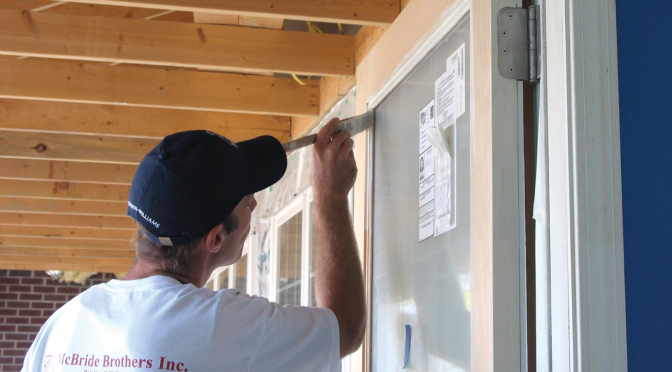Answers to paint pros’ most pressing questions by Rick Watson, Ask Your ProPartner™ columnist for PPC magazine. This time: Rick responds to a reader about the adhesion problems they’ve encountered when painting doors.
We’re having a difficult time getting paint to stick to exterior and interior doors. We have cleaned and primed and the satin paint I used still scratches off very easily. I’m old school and never ran into these issues when I used to use oil- based paints. What’s the problem?
First, do not use paint thinners to clean! Many paint thinners/ solvents that contain hydrocarbons do not allow most acrylic/ water-based type coats to form a hard film.
We recommend emulsifying agents/ cleaner degreasers like your typical dishwashing soap. These type of cleaners help remove grease, oil, contaminants and dirt. Clean thoroughly and rinse with clean water.
If this wasn’t the problem, then you might not like my next answer. I would strip the existing paint off the doors and start all over.1
Why strip the doors?
If there is an underlying issue, nothing that you do (or the paint you use) will help.
For example, there might have been oils, grease, dirt, grime or contaminants in or under the existing paint film. In that case, you can’t solve the problem even if you follow the correct steps of cleaning them with an emulsifying agent/cleaner degreaser, scuff sanding and then priming and painting.
That’s because you could only clean the top surface and were not able to remove the contaminants that were possibly ground into the paint film. On the surface it looked good to paint, but in and underneath the coating – not so good.
What coatings do you recommend for doors?
Once the door is stripped, I would use a quality primer designed for the specific substrate, such as wood primers and metal primers. For fiberglass and paintable factory finishes that can be painted, I recommend a bonding primer.
My preferred topcoat is Emerald® Urethane Trim Enamel. This is a urethane modified alkyd that gives you the durability of a urethane with the flow and leveling of an alkyd, all wrapped up in a water-based coating with less than 50 g/L VOCs.
It is formulated for use on both interiors and exteriors, and its excellent flow and leveling characteristics make it ideal for finishing doors, windows and trim. It’s available in gloss, semi-gloss and satin sheens.
What other coatings are good for doors?
If you’re in a hurry or have many doors to do, SnapDry™ Interior/Exterior Waterbased Door & Trim Paint is designed for use on doors, trim, windows and shutters. SnapDry is resistant to dirt, fingerprints and UV weathering and is available in satin or semi-gloss.
With SnapDry’s Quick Dry Technology, you can close doors in as little as an hour and not worry about them sticking. SnapDry coalesces within minutes, leading to a harder film much faster. How? Crosslinking smaller particle size polymers react quicker to form the film. So the crosslinking enhances hardness, block resistance and improves moisture resistance.
This leads me to the term “hot blocking.” What that means is that, once dry, the SnapDry film will not soften when it comes into direct sun light. Higher temperatures and direct sun exposure will not soften the film like it will with most latex paints.
Pro tips
When using SnapDry, make sure any paint drips are smoothed out with a brush or roller within five to 10 minutes of application. If drips are noticeable after 10 minutes of application, allow one to two hours to dry and use a putty knife or razor to remove the affected area. Lightly sand the area if needed and repaint.
Allow SnapDry to dry before applying a second coat. When the second coat is dry, remove all painters’ tape and re-install the door hardware.
While making brush or roller strokes, make sure the fresh paint you are overlapping is still wet. This will help you to avoid paint streaks. In other words: put it on, brush or roll it out, then leave it alone. The more you try to work it, the more brush and roller marks you will see.
Notes
1 Warning! Removal of old paint by sanding, scraping or other means may generate dust or fumes that contain lead. Exposure to lead dust or fumes may cause brain damage or other adverse health effects, especially in children or pregnant women. Controlling exposure to lead or other hazardous substances requires the use of proper protective equipment, such as a properly fitted respirator (NIOSH approved) and proper containment and cleanup. For more information, call the National Lead Information Center at 1-800-424-LEAD (in US) or contact your local health authority.
This article was originally published in the Summer 2021 issue of PPC magazine. Rick Watson is director of Product Information and Technical Services at Sherwin-Williams. He answers reader questions about products, application and paint technology in the Ask Your ProPartner™ column in PPC magazine.

